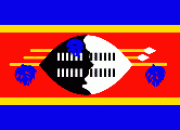
Background
The Quality Assurance program was introduced in October, 2006 by COHSASA in collaboration with SAHCD, and introduced to stakeholders in 2007 February. A multidisciplinary team was nominated and capacitated with 18 pilot clinics identified for program implementation. A baeline survey was conducted, with subsequent assessment visits conducted through March 2010. Four health facilities qualified for the final survey, with three accredited facilities and ongoing assessment. HIVQUAL was launched in 2009, with training for health care workers on QI concepts and methdology and development of national indicators.
The Swaziland National Quality Program for Health Care Services is fully integrated into the overall Ministry of Health organizational structure including:
- Ministry of Health leadership- A Directorate of Quality
- Departments and departmental leaders for quality
- Regional quality assurance teams
- Health care workers- Quality part of routine work
- Patients – those whom we serve
- Other key stakeholders
Demographic Data
Population: +1 million
- HIV prevalence:
-19% general adult population
-26% among 15-49 years
-191,000 people living with HIV
-15,000 children <15 years of age
-50,000 enrolled in ART
- TB/HIV prevalence: ~ 79% of TB patients have HIV
- Other pertinent Demographics:
- Year Program Began: 2009
- Scope: Adult and pediatric HIV
- Number of facilities: 32
National Quality Program Components
HIV/AIDS Epidemic:
Prevalence of 26%. Estimated incidence of 2.9%. “Generalized hyper-endemic HIV prevalence.” Highest prevalence among 25-29 years age group for women and 35-39 for men at 49% and 45% respectively. Estimate HIV population of 185,803 in 2009 and rise to 216,735 by 2015. Major mode of transmission is heterosexual contact.
High TB incidence compounds the impact of the HIV epidemic. 2006 Sentinal Surveillance Survey reported prevalence of HIV among TB patients up to 79.6%.
*Data from Monitoring the Declaration of the Commitment on HIV and AIDS (UNGASS). Swaziland Country Report, March 2010.








